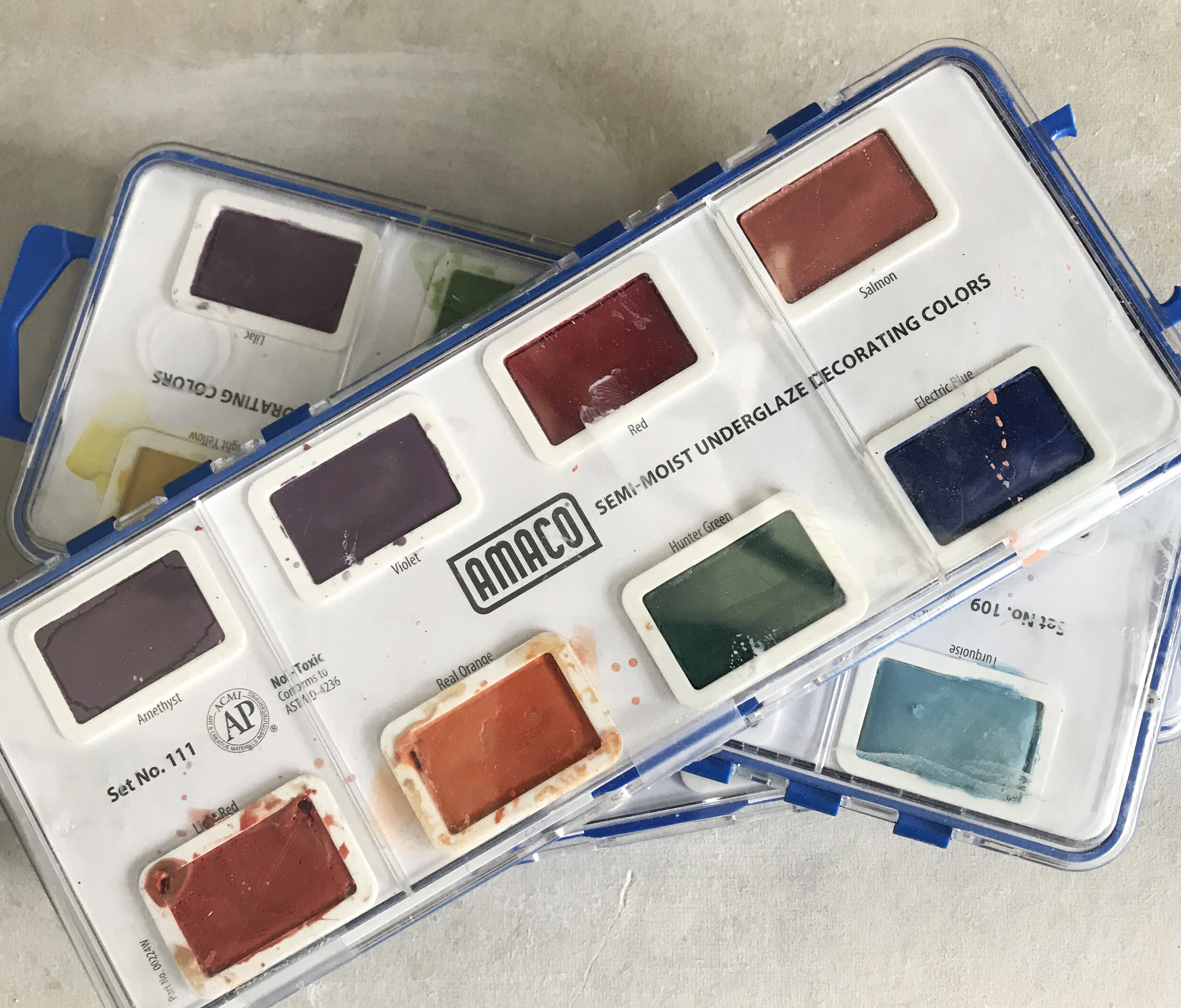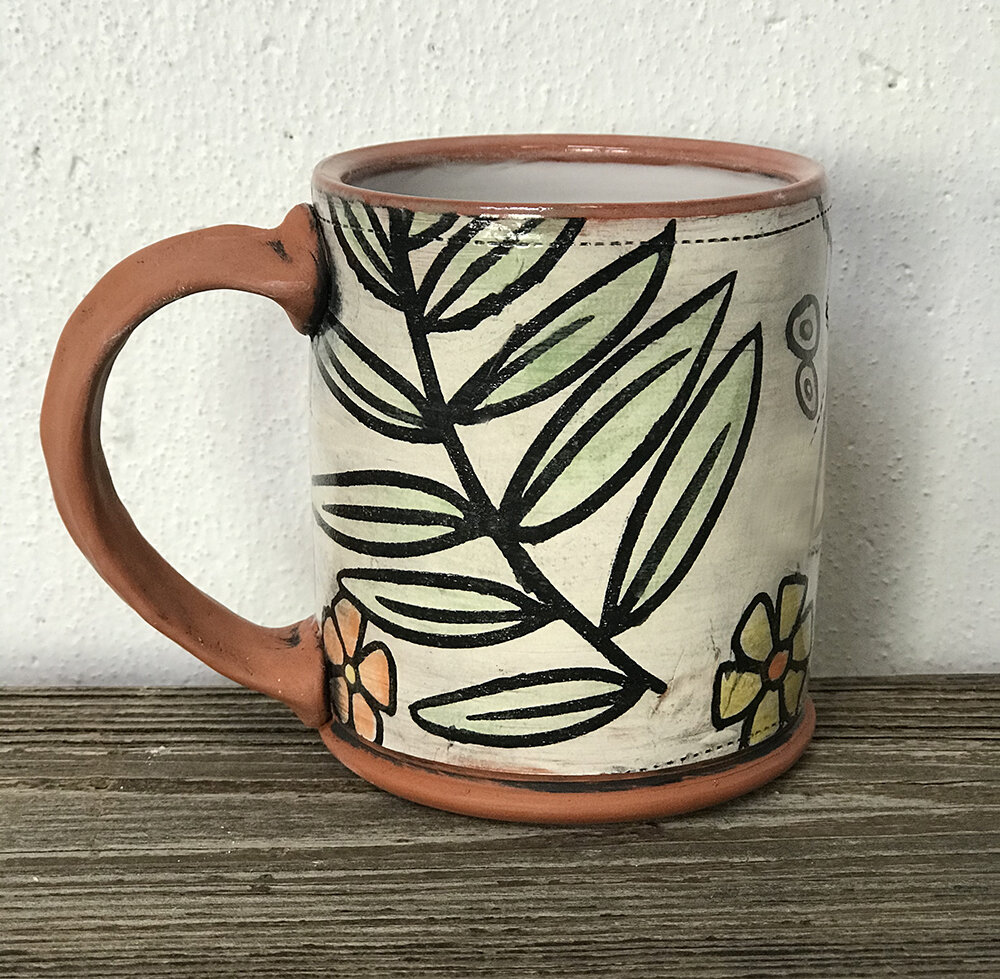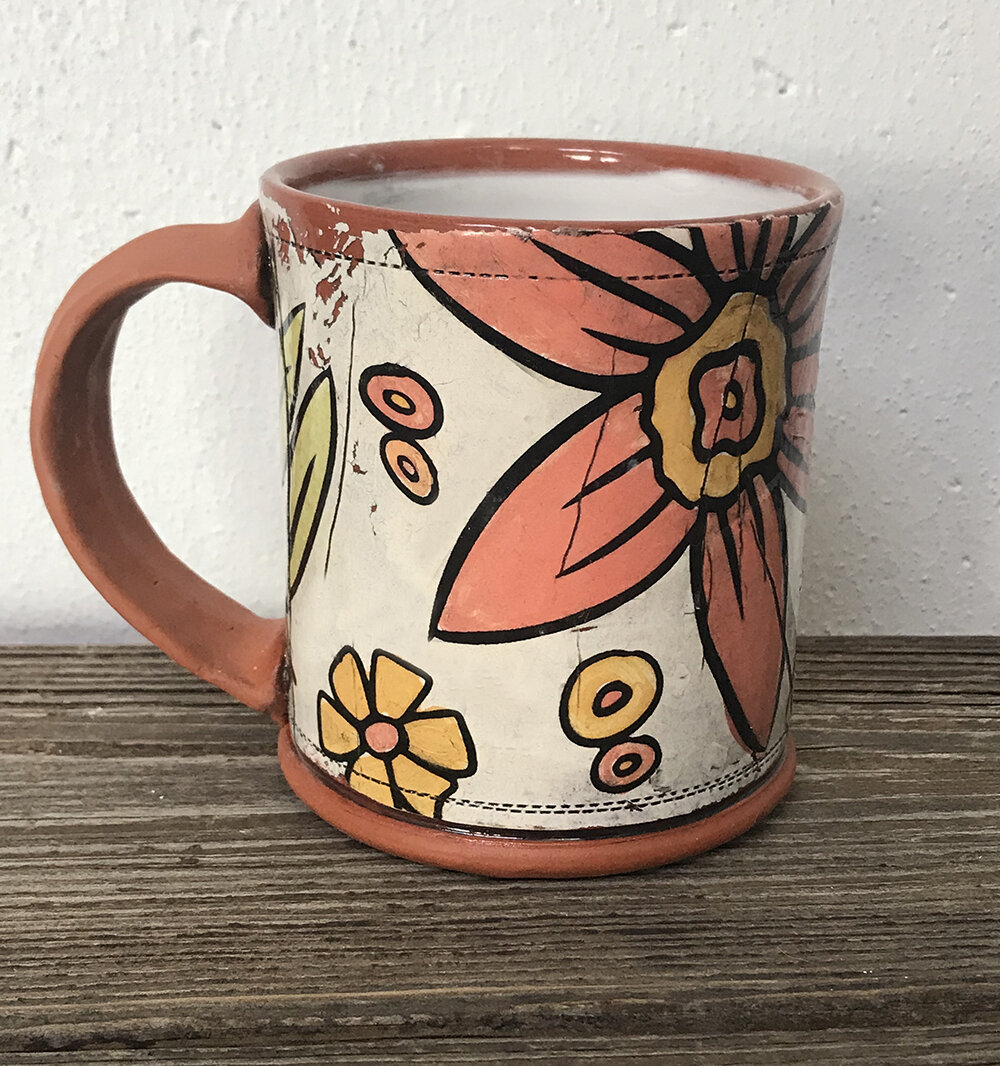Slips/Glazes
The recipes and commercial glazes listed below are ones that I have personally used with success with my underglaze transfers. With any new material, there will always be variables that are unique to your own clay, type of kiln and firing temperature, so experimentation and testing are crucial for good results.
Slips
Jason Bige Burnett is probably my favorite ceramic artist who works with underglaze transfers. His book, “Graphic Clay”, is a must-have for anyone interested in how to transfer an image to clay. That being said, his “All-Purpose Slip” recipe works well for me. It is highly versatile, meaning you can add Mason Stains or some other colorant to tint it and make yummy colors (see photo above), and it fires anywhere between Cone 04-10 depending on the firing range of your clay and/or glazes. You can easily find his recipe by googling or if you don’t want to make the slip yourself, you can buy it in dry form on his site, Isla Transfers
The other slip I use that works well for me is one that I make from my porcelain clay body - Laguna Miller’s Cone 6 Porcelain #16. If you use another slip besides one from your own clay body, I highly recommend testing it first to see if it’s suitable for underglaze transfers and the techniques listed on the Process pages.
Painting a light orange wash on a bisqued mug before glazing in a clear glaze. As long as the color is light enough, it won’t obscure the black outline when fired.
Underglazes
I use the Amaco Velvet Underglaze Series in the base recipe for my “ceramic ink”. It’s also convenient to have on-hand for touch ups after transferring an image, or diluting it with water to make a wash that can be used to add color to an image once it is bisqued. This Series has a wide firing range and fires true to color at Cone 05-06, but most colors will fire true at Cone 6 as well and some others as high as Cone 10. They must be used with a proper glaze to be food safe.
Semi-Moist Underglazes
These Amaco semi-moist decorating colors are especially good for watercolor or painterly effects on pottery. I use them as a light wash much as the same way I use diluted underglazes, to add color and detail to the transferred images after they are bisque fired. They are rated for Cone 04-10 except for Peach and Rose (Cone 04-6), and they too must be used with a proper glaze in order to be food safe.
Other Glazes
By all means, test any glaze you have in your studio that you think might work well with the transfers. For instance, I have a glaze called “Peacock” which is virtually Kitten’s Clear Gloss with the Mason Stain “Peacock” added to it. It works beautifully with the transfers, as it is still transparent, but tints the entire piece a dark turquoise color. The black still comes through as a strong black. Celadons are definitely worth a try as well as any opaque glaze which could be used just at the rim, or bottom half, or in sections, etc. etc. So many possibilities - any and all are worth a try.
Finished mug. Color was applied as a light wash of diluted underglazes after bisque firing. Glazed in Amaco LG-10 Clear.
Low-Fire Glazes
Amaco’s LG-10 low-fire clear glaze is a super glossy transparent glaze that works beautifully in most if not all circumstances. Its firing range is Cone 04-06 and is my go-to glaze for my terra cotta work. I’ve also used Speedball’s Earthenware Clear Glaze (firing range is Cone 05-06) with success, although I found through testing that LG-10 is just a little more clear.
Finished mug. Color was applied during the leather-hard stage, brushed onto the newsprint transfer with colored slips, then the entire newsprint image was brushed with a white slip before transferring onto the mug. The handle was added afterwards. Glazed in Amaco LG-10 Clear.
Mid-Fire Glazes
I have tested 3 Amaco Sahara HF Series Clear glazes with success at Cone 5 and Cone 6: HF-9 Zinc-Free Clear, HF-10 Clear, and HF-12 Clear Satin. Of course, the satin does have a milky sheen that slightly clouds the clarity of the transfer somewhat, which is understandable because of the nature of satin glazes. And I found that the HF-9 is more translucent which makes the underglaze transfers look a little sharper than with the HF-10. But all in all, the 3 listed above work very well, depending on what effect you’re ultimately looking for, with the exception of the HF-10 over green (see photo below). Test, test, and test again to see what result suits your work best.
Amaco HF-10 Clear and Amaco HF-9 Zinc-free Clear over a green transfer on Cone 6 porcelain.








